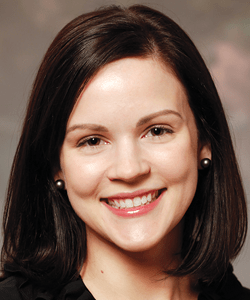According to an American Heart Association survey, only 56% of women recognize heart disease as a leading cause of death among females and fewer than half consider themselves well informed about it. Educational campaigns have been launched to increase awareness of heart disease among women, but studies indicate that younger women with acute myocardial infarction (AMI) risk factors often do not receive counseling on their risk of cardiac events or ways to modify their risk. “AMI is less common among younger women, but outcomes for these patients tend to be worse than those for similarly aged men,” says Erica C. Leifheit-Limson, PhD.
Among young patients with AMI, few investigations have looked specifically at differences between sexes with regard to cardiac risk factors, perceptions of cardiac risk, and healthcare provider discussions about these risks. To address this issue, Dr. Leifheit-Limson and colleagues had a study published in the Journal of the American College of Cardiology that examined these associations among young women and men who were hospitalized with AMI.
Making Comparisons
For the study, the authors compared the prevalence of several cardiac risk factors by sex in 3,501 AMI patients aged 18 to 55. The participants, who presented to hospitals in the United States and Spain, were enrolled in the Variation in Recovery: Role of Gender on Outcomes of Young AMI Patients (VIRGO) study, and data were examined between August 2008 and January 2012. Baseline data were gathered from VIRGO participants using medical charts, in-person interviews, and their prior medical history. During the baseline interview, patients were asked about their personal perceptions of risk and discussion of heart disease risk and modifiable risk factors with their healthcare providers prior to AMI.
According to the results, nearly all women and men had at least one of five cardiac risk factors, and nearly two-thirds had three or more. “Overall, only about half of women and men considered themselves at risk for heart disease,” says Dr. Leifheit-Limson. “Even fewer patients reported that their healthcare providers talked to them about their risk and risk modification.”
Women were 11% less likely than men to report being told they were at risk before the AMI and 16% less likely to report having a healthcare provider discuss heart disease and ways to modify risk, according to the study. This inequity was more pronounced among patients without a history of coronary artery disease and among those who had not visited a cardiologist in the year before the index AMI.
Seizing Opportunity
Communication and outreach are sorely needed to counter stereotypes about heart disease with facts and validated risk assessments. “Physicians should take advantage of opportunities to improve heart disease risk awareness,” says Dr. Leifheit-Limson. “We need more effective ways to alert young people, especially women, about cardiovascular risk factors and modifications to reduce morbidity and mortality. We need to break the stereotype of heart disease afflicting primarily just men and older adults. For younger women, in particular, individualized discussions may be required to connect the dots regarding their risks for heart disease.”



 PWeekly
PWeekly